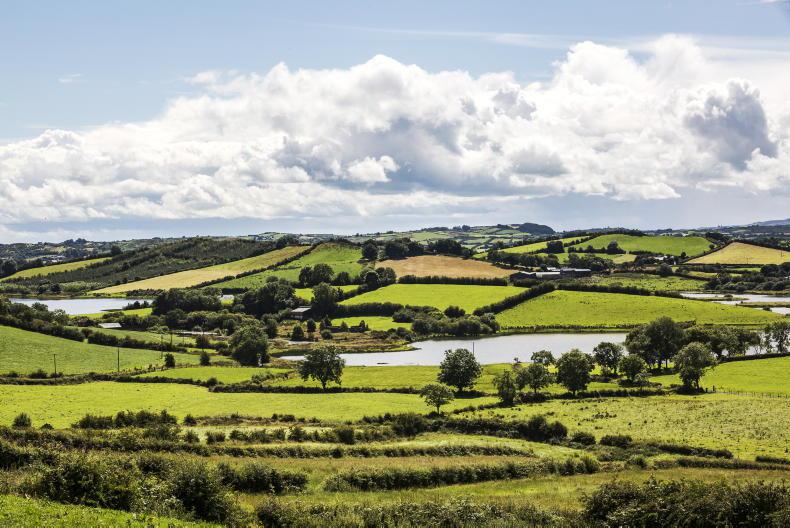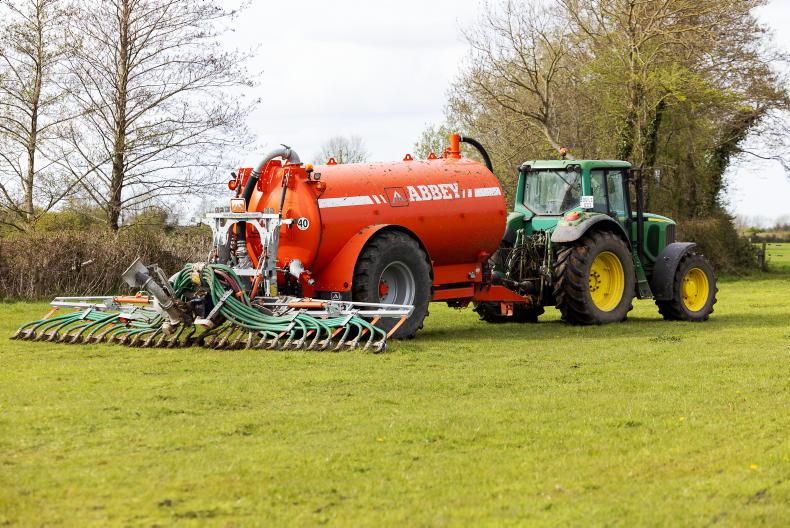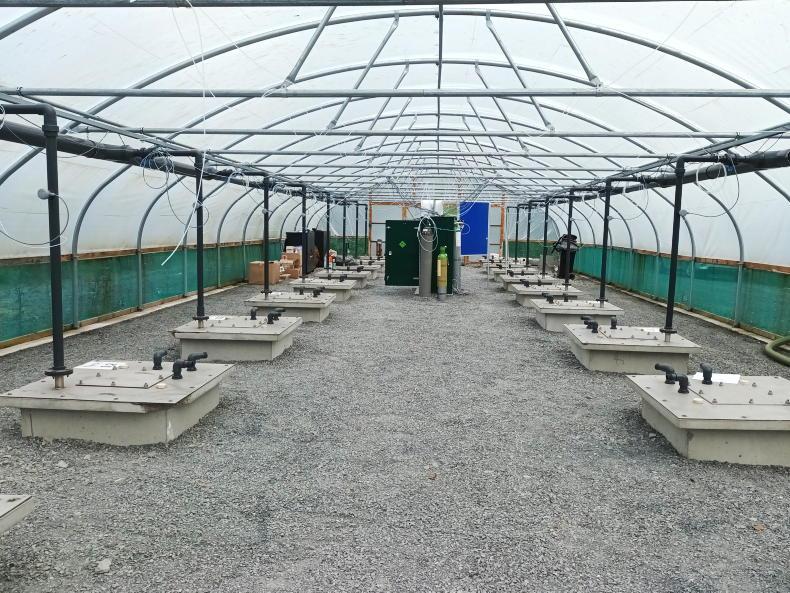Water quality, particularly nitrate levels, are a big concern to all involved in dairy farming in Ireland. Recently announced changes to the nitrates derogation are a signal as to what direction policy is going in. Many now agree that the retention of the derogation by 2025 hangs in the balance.
As part of my Nuffield programme, I got the opportunity to visit farms in the UK and US that were finding new ways to reduce nitrate pollution in water.
Butler Farms Hampshire, UK
With high nitrate levels in the Solent shipping lane around Southampton and Portsmouth, a nitrate offsetting scheme has been established on the dairy and tillage farm of Jamie and Will Butler.
The Butlers run a dairy and tillage operation at Woolworth Farm, alongside a number of other enterprises, one of which is the nitrate offsetting area.
Planning permission regulations in the area mean that some new large projects are required to offset the potential additional nitrate to waterways by purchasing nitrogen credits from someone who can remove the same amount of nitrogen from a water body, a bit like carbon credits.
A small river passes through the Butler’s Meon Springs camping and fishing site, so Jamie decided to construct a wetland site to consume nitrogen from this water and sell the credits to a business that was looking to offset their nitrate obligations.

Water is diverted from the river and fed into the newly created wetlands, which consume the nitrogen and also provide an environment for rare species
This newly constructed site basically slows down water flow and employs nitrogen hungry plants and trees that flourish in wet conditions.
The nitrogen hungry plants consume nitrate from the waterway, so the water leaving the site has lower nitrogen levels than when it entered the site.
This project is in its infancy, with a lot of the plants only becoming established. However, it is already reducing nitrogen levels in the river from 9ppm to 7.5ppm.
An additional benefit to it is the ecological service it is going to provide, with an excellent habitat for declining species on the 7.2ha site.
Looking at agriculture in Iowa, it was surprising to see that soil and water conservation are so high on the agenda. With high rainfall levels during the growing season, land drainage is necessary, with simple tile drains very similar in construction to those in Ireland common across most farms in the state. As farmland is moving away from pastoral-grazing with livestock to growing crops of corn and soya beans, the soil is more exposed, leading to nitrogen leaching and creating problems downstream for drinking water quality.
The Natural Resources Conservation Service (NRCS), Cedar Rapids Water Works and farmers are working together on a novel solution.

Inspection chamber for the woodchip filled bio-reactor on Henry Shepherd's farm in Iowa.
We visited a number of farmers involved in the programme. On the farm of Henry Shepherd, we saw how drained water from farmland entered in to a specially constructed underground bio-reactor.
Aside from two inspection points, there was little to be seen above the ground. The construction is basically a pit dug six feet deep, lined with non-porous membrane and four feet of wood chip is filled in.
The pit is covered over with soil and high nitrate water is diverted in to it. Microbes and bacteria consume nitrogen in the water to break down the carbon in the woodchip and the nitrogen is released as nitrogen gas into the atmosphere where it originated from.
The water quality in this reactor is under intense scrutiny by the US department of agriculture. Results are very impressive, with nitrogen removal levels of 75% from the incoming water being achieved.
The expected life of the bio-reactor is 15 years. The NRCS funds the construction of the bio-reactor, the Water Works company facilitates the build and the farmer receives $1,000 per outlet. One reactor will serve approximately 400ac of drained land.
Summary
In both countries, the farmers were being rewarded to reduce nitrogen in waterways and had a vested interest in ensuring water quality. Industry was funding these schemes to satisfy their obligations while state bodies are overseeing the results.
All parties are happy with the approach and at the end of the day the environment is the real winner.
While both systems were slightly different in their process, the general approach of using biology to consume nitrogen could be adopted in Ireland. For example, a portion of the water from a particularly problematic river or stream could be diverted towards a subterranean bio-reactor. This would require co-operation between the landowner, EPA, OPW and perhaps a milk processor. The nitrate content of the water would be reduced by the bio-reactor before it returned back to the main water course.
These subterranean bio-reactors don’t take up a lot of space, so the landowner could decide to leave this area fenced off as a habitat or continue to use it for agricultural purposes. The advantages to the EPA and OPW would be the protection and enhancement of the waterway, the landowner would receive compensation and the processor would be protecting their greatest asset - consumer confidence.
Water quality, particularly nitrate levels, are a big concern to all involved in dairy farming in Ireland. Recently announced changes to the nitrates derogation are a signal as to what direction policy is going in. Many now agree that the retention of the derogation by 2025 hangs in the balance.
As part of my Nuffield programme, I got the opportunity to visit farms in the UK and US that were finding new ways to reduce nitrate pollution in water.
Butler Farms Hampshire, UK
With high nitrate levels in the Solent shipping lane around Southampton and Portsmouth, a nitrate offsetting scheme has been established on the dairy and tillage farm of Jamie and Will Butler.
The Butlers run a dairy and tillage operation at Woolworth Farm, alongside a number of other enterprises, one of which is the nitrate offsetting area.
Planning permission regulations in the area mean that some new large projects are required to offset the potential additional nitrate to waterways by purchasing nitrogen credits from someone who can remove the same amount of nitrogen from a water body, a bit like carbon credits.
A small river passes through the Butler’s Meon Springs camping and fishing site, so Jamie decided to construct a wetland site to consume nitrogen from this water and sell the credits to a business that was looking to offset their nitrate obligations.

Water is diverted from the river and fed into the newly created wetlands, which consume the nitrogen and also provide an environment for rare species
This newly constructed site basically slows down water flow and employs nitrogen hungry plants and trees that flourish in wet conditions.
The nitrogen hungry plants consume nitrate from the waterway, so the water leaving the site has lower nitrogen levels than when it entered the site.
This project is in its infancy, with a lot of the plants only becoming established. However, it is already reducing nitrogen levels in the river from 9ppm to 7.5ppm.
An additional benefit to it is the ecological service it is going to provide, with an excellent habitat for declining species on the 7.2ha site.
Looking at agriculture in Iowa, it was surprising to see that soil and water conservation are so high on the agenda. With high rainfall levels during the growing season, land drainage is necessary, with simple tile drains very similar in construction to those in Ireland common across most farms in the state. As farmland is moving away from pastoral-grazing with livestock to growing crops of corn and soya beans, the soil is more exposed, leading to nitrogen leaching and creating problems downstream for drinking water quality.
The Natural Resources Conservation Service (NRCS), Cedar Rapids Water Works and farmers are working together on a novel solution.

Inspection chamber for the woodchip filled bio-reactor on Henry Shepherd's farm in Iowa.
We visited a number of farmers involved in the programme. On the farm of Henry Shepherd, we saw how drained water from farmland entered in to a specially constructed underground bio-reactor.
Aside from two inspection points, there was little to be seen above the ground. The construction is basically a pit dug six feet deep, lined with non-porous membrane and four feet of wood chip is filled in.
The pit is covered over with soil and high nitrate water is diverted in to it. Microbes and bacteria consume nitrogen in the water to break down the carbon in the woodchip and the nitrogen is released as nitrogen gas into the atmosphere where it originated from.
The water quality in this reactor is under intense scrutiny by the US department of agriculture. Results are very impressive, with nitrogen removal levels of 75% from the incoming water being achieved.
The expected life of the bio-reactor is 15 years. The NRCS funds the construction of the bio-reactor, the Water Works company facilitates the build and the farmer receives $1,000 per outlet. One reactor will serve approximately 400ac of drained land.
Summary
In both countries, the farmers were being rewarded to reduce nitrogen in waterways and had a vested interest in ensuring water quality. Industry was funding these schemes to satisfy their obligations while state bodies are overseeing the results.
All parties are happy with the approach and at the end of the day the environment is the real winner.
While both systems were slightly different in their process, the general approach of using biology to consume nitrogen could be adopted in Ireland. For example, a portion of the water from a particularly problematic river or stream could be diverted towards a subterranean bio-reactor. This would require co-operation between the landowner, EPA, OPW and perhaps a milk processor. The nitrate content of the water would be reduced by the bio-reactor before it returned back to the main water course.
These subterranean bio-reactors don’t take up a lot of space, so the landowner could decide to leave this area fenced off as a habitat or continue to use it for agricultural purposes. The advantages to the EPA and OPW would be the protection and enhancement of the waterway, the landowner would receive compensation and the processor would be protecting their greatest asset - consumer confidence.











SHARING OPTIONS